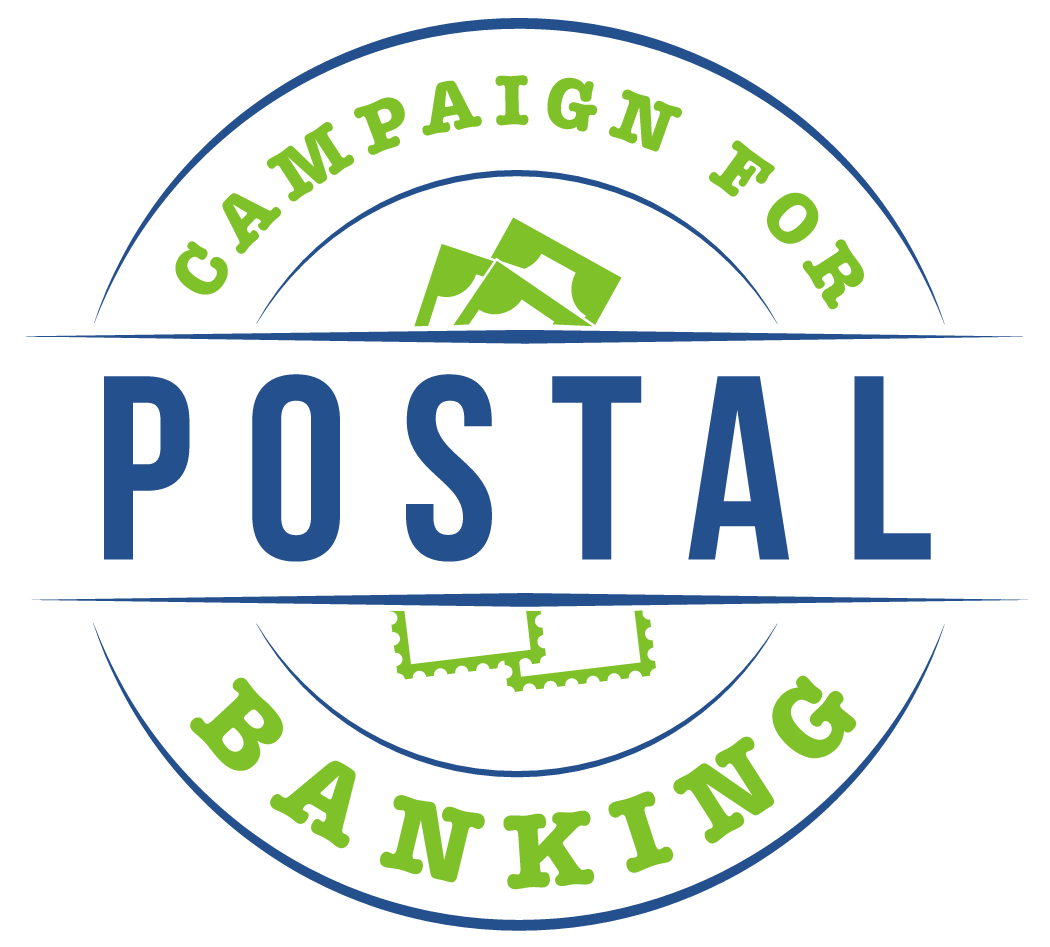The Postal Service Wants You to Bank at Your Post Office
Campaign for Postal Banking notes on this article:
* To be clear, it’s the USPS Office of Inspector General (OIG) that is raising the possibility of expanded financial services at the Postal Service – not the Postal Service. To read more about the work of the OIG, click here.
* Smith’s article leaves out the crucial fact that the USPS had an operating profit of $1.374 billion in Fiscal 2014. So far in Fiscal Year 2015, the operating profit is $1.616 billion. The “losses” are due to a 2006 Congressional mandate that required the Postal Service to pre-fund all of its future retiree health benefits (75 years worth) over a period of just ten years. See Know the Facts for more.
* The OIG documents that expansion of current services and products will help consumers access affordable financial services and will help the Postal Service financially. However, revenue from the expansion will not alleviate the $5.5 billion a year pre-funding requirement – only Congress can fix that fiasco.
Rich Smith, The Postal Service Wants You to Bank at Your Post Office: Sen. Warren and the U.S. Postal Service’s Inspector General would like to run an idea by you. Daily Finance, June 23, 2015.
Elizabeth Warren would like to change the way you bank.
The Massachusetts Senator and consumer advocate firebrand may not be running for president. But her backing of the U.S. Postal Service’s plan to begin offering budget-priced banking services to U.S. savers could remake the American landscape regardless.
An Idea Whose Time Has Come?
In May, USPS admitted to losing $1.5 billion in its most recent fiscal quarter. If the losses keep up at this rate, the Post Office’s budget deficit could surpass last year’s $5.5 billion loss, and swell into a $6 billion annual deficit. Last month, though, the USPS Office of Inspector General refloated an idea to close the Post Office’s budget gap. Simply put, the Post Office should turn itself into a bank.
Not entirely, of course. Under the Inspector General’s plan, backed by Sen. Warren, USPS would still deliver mail and such. But it would also begin expanding the kinds of financial services it offers, permitting “unbanked” and “underbanked” customers to take out small loans, cash checks, pay bills, and open savings accounts — all at their local post office. According to the Inspector General, entering this market could help USPS reap as much as $10 billion in annual revenue — and close its budget gap with a resounding snap.
Even just expanding the financial services the Post Office already offers, by adding electronic wire transfers and ATMs to existing offerings of selling paper money orders and prepaid cards, and executing international money transfers, could raise as much as $1.1 billion in additional revenues for USPS.
An Idea Whose Time Came a Year Ago …
USPS actually first voiced this suggestion early last year (when it was promptly and publicly taken up by Sen. Warren). Back then, Warren explained that 68 million Americans currently have no active checking accounts, yet still need the kinds of banking services associated with such accounts. To get these services, they pay through the nose.
According to Warren, banks and — in particular — payday loan and check cashing stores, charge unbanked customers “an average of $2,412 per household” annually for ordinary financial services. The Senator notes that “the average underserved household spends roughly 10 percent of its annual income on interest and fees — about the same amount they spend on food.”
What It Means to Them
This means that in one fell swoop, expanding financial services offerings at post offices could both solve USPS’s chronic budget deficit and prevent millions of Americans from being overcharged for basic banking services.
No longer would the “unbanked” be stuck paying high monthly service fees to maintain a bank checking account with a too-low balance, or even higher costsfor small loans from a payday lender. These low-margin activities, too unprofitable for many banks to bother with them, could be offered at the post office instead. As a side benefit, these folks would then have thousands of extra dollars a year to spend on things they actually want to spend their money on, helping to grow the economy.
What It Means to You
Of course, if you already have a bank account, you may think USPS’s plan is interesting, but not really relevant to you. It could become relevant, however.
In recent months, we’ve seen multiple stories of traditional banks closing down their physical branches to cut costs and take advantage of the cheapness of online banking. SNL Financial reports 332 bank closures across the U.S. in the first quarter of 2015. One single bank, JPMorgan Chase (JPM), says it’s planning to close 300 branches over the next two years.
Assuming this trend continues, finding a physical branch of your bank at which you can cash a check or get a money order when you need it could become increasingly difficult. Knowing that the local post office can help you out, on the other hand, could turn increasingly attractive.

